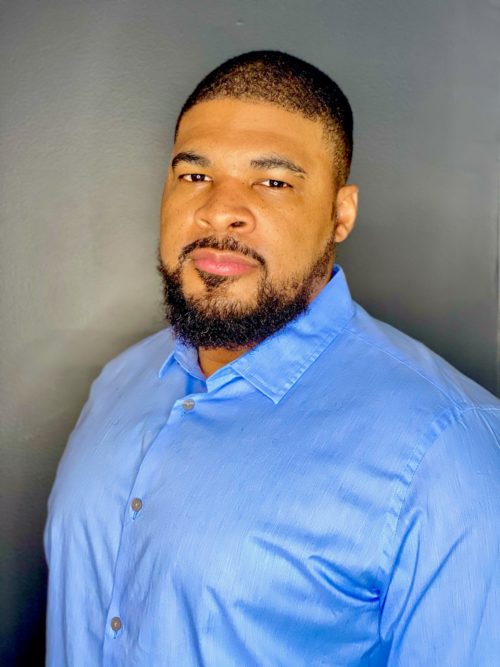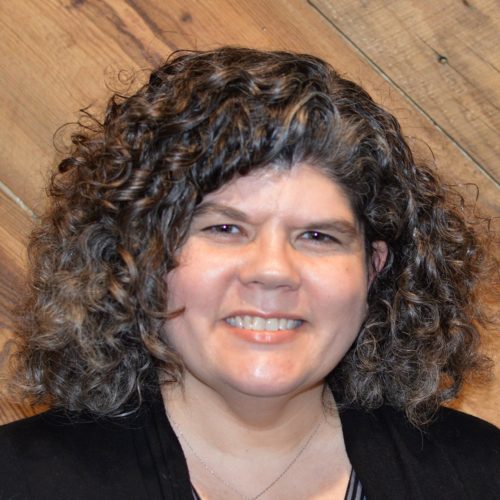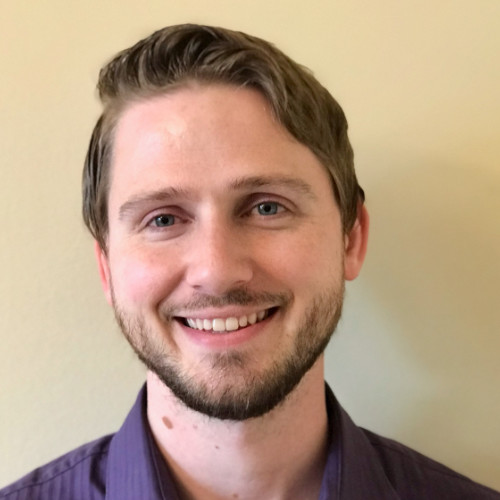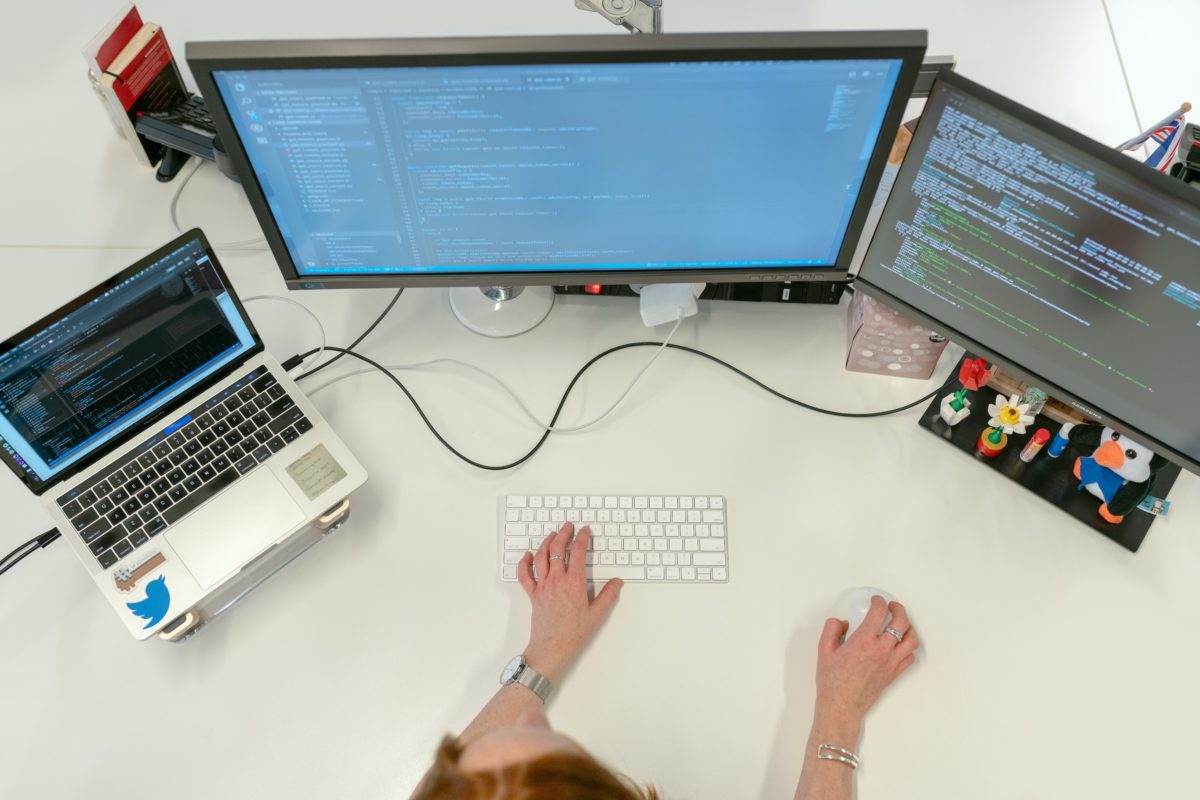How do you land a job in tech? Do you need a college degree? What does a software engineer actually do?
For Tech Career Paths Month at Technical.ly, we talked to five Delaware software engineers at different stages of their careers and asked them a handful of questions that amounted to: How did you get here?
Here’s what they told us, from the importance of mentorship to how they continue to learn and grow in their roles.
Brian Patterson, associate software engineer, JPMorgan Chase
Level: Entry (recently promoted)
Education: Completed high school in 2004, then worked in manufacturing, picking up college courses when time permitted until 2019, when he enrolled in Zip Code Wilmington’s Java bootcamp

Shortly after high school, Patterson took an opportunity in the manufacturing field where he worked as a technician for 12 years, eventually working his way up to a team leader position before deciding to pursue a path in the tech field. After graduating from Zip Code Wilmington, he landed an entry-level position at JPMorgan Chase.
Last month, he was promoted to associate software engineer. In this new role, he’s taken on more responsibility in his team’s daily operations and gotten involved in onboarding and training new developers.
The position puts him in a big data environment using Java, Scala, Spring Boot, Apache Hadoop, Hive and Kafka: “Much of my work involves establishing new pipelines for large amounts of data from one internal group to another in order to enhance customer experience,” he said.
The tech world, Patterson says, is intense.
“I wish I knew exactly how fast I would have to hit the ground running upon entering this field,” he said. “My team is incredibly busy, so I had to pick up many facets of our operation on the move, and often on my own. Fortunately, I was able to quickly adapt, in part, due to my experiences with Zip Code. One of my biggest takeaways was learning how to learn efficiently in the tech field.”
How does he continue to learn and grow in his role?
“Much of my learning initially came from taking on new tasks involving technology I had yet to work with,” he said. “It can be quite trying at times, but I believe it remains a very effective means of learning for me throughout my career. Now that I have become more familiar with my teams infrastructure, I feel more comfortable applying learned tools that I pick up in my spare time from online learning sites such as Pluralsight, Udemy, JP Morgan’s internal resources, and even YouTube. I have also begun to attend online seminars when time permits.”
Kate Bayard, software engineer I, M&T Bank
Level: Junior-middle
Education: MBA from North Carolina University earned in 2002, and Zip Code Wilmington grad of 2019

Bayard is a a mid-career changer who spent more than a decade at real estate company McConnell Johnson, primarily doing marketing and PR work for its SolarDock solar energy product. From there, she moved on to the nonprofit Energize Delaware, where she also worked in marketing.
“I realized I was starting to burn out on the marketing side of stuff,” she said. “I started soul searching to find what kind of work I had enjoyed in the past and I realized I loved working on websites, maintaining the database platform.”
She knew about Zip Code, and decided to take the plunge in 2019: “Every step of the way it reinforced that that was the path that I wanted to take,” she said.
Her position at M&T Bank is her first tech job, though her position has gone through a transition as the financial organization has made tech-focused changes.
“I am on a team that supports the Wilmington Trust document custody business,” she said. “My team maintains software that we’ve developed internally to support the business and also third-party innovations that our business lines work with. On a-day to-day basis, sometimes I’m coding, and sometimes I’m working with a business to coordinate upgrades or troubleshooting.”
Databases are central to her work — more than she expected, even after her Java-heavy training. But she’s been able to adapt on the job.
How does she continue to learn and grow in her role?
“Some of it is dictated by the work you’re doing,” she said. “The nature of the job is solving problems, right? If there is an answer we wouldn’t be involved with it. So, what do I need to know to get the work done, but also looking at some of the other work that my teammates might be working on that I haven’t been involved in — what do I need in order to support my team?”
Devon Smith, VP and manager of business applications, WSFS Bank
Level: Middle management
Education: Bachelor of science in management information systems (MIS) from University of Delaware earned in 2012; project management certificate course from UD earned in 2015; project management professional certification earned in 2016; fundamentals of leadership certificate from WSFS Bank earned in 2016
Smith started out as an accounting major at UD and quickly discovered it wasn’t for her. She switched to MIS because, she said, she was “intrigued at the concept of bridging business concepts with technology solutions to solve problems.”
Throughout college, she worked part-time at WSFS as a summer teller and other roles though graduation, including on the loan operations team. In 2013, that team took on a project to digitize the customer loan records. It became Smith’s first big project at WSFS.
“I was the subject matter expert on customer loan documents,” she said. “That project opened my eyes to the software development process. I helped design the system, defined requirements, tested the system, reported bugs and worked closely with the software developers. At the end of the project, when the system went live and I saw the efficiency gains, I was hooked.”
Since her first tech job at WSFS as a junior business analyst in 2014, she has shifted to business analyst as well as project manager for an initiative to streamline the check deposit review process performed by the fraud team in 2015. She’s since worked as technical project manager for several large-scale software development projects.
If we only continue to use the technologies we’re familiar with, then we will miss out on opportunities to continue delivering value for our internal and external customers.
“I really enjoy managing technical projects using the Agile methodology,” she said. “The Scrum team meets daily to review progress, and priorities could change day to day. These projects are fast moving and challenging and we’re always solving complex problems.”
In her latest role as manager of business applications, Smith has become the product owner of the solutions she managed while a technical project manager.
Her confidence as a technologist has grown over time.
“I wish I knew in the beginning what I am capable of today,” she said. “I was so scared to leave my comfort zone of the records management role in loan operations. I didn’t think I was ‘technical’ at all. I wish I knew that my organizational skills, drive to deliver quality and genuinely caring attitude was half the battle of succeeding in my future roles.”
How does she continue learning and growing in her role?
“I try to never say no to an opportunity,” she said. “Even if I feel apprehensive at first or my knee-jerk reaction is that I can’t tackle it because I don’t have time. Every time I take on a new opportunity, it’s a beneficial experience that helps me grow and learn. I work to stay current with emerging technologies and trends so that our team continues to innovate. If we only continue to use the technologies we’re familiar with, then we will miss out on opportunities to continue delivering value for our internal and external customers.”
Finally, she says, it’s important to listen to peers.
“I have learned so much by listening to other areas of the bank and their responsibilities,” Smith said. “You can learn something new from anyone — no matter their department. There have been countless times my projects have benefited from knowledge I gained from other teams in unrelated conversations.”
Samuel Sheldon, UI software engineer, M&T Bank
Level: Senior
Education: Bachelor of science in computer information systems from Neumann University; continuous learning from digital resources such as Pluralsight, Dev.to, Mozilla Developer Network, web.dev, Chrome Dev Summit and tech blogs and articles

Sheldon almost took a job as an assistant manager at Sheetz a month and a half after graduating from college.
“Thankfully, a position as a quality assurance analyst opened up and I was able to get my first tech job right out of school,” he said. “Quality assurance wasn’t my desired position but it did allow me to get into the tech industry so getting the developer position I wanted was a much easier transition. Plus, the QA skills I learned have ended up helping me out a lot as a developer.”
Since then, he’s advanced to the level of a senior software engineer. Mentorship was an important part of that growth.
“Having good mentors during my career has been critical for advancing,” he said. “Learning from the leaders in my life has giving me inspiration to emulate them and in turn develop the leadership and other skills that have led to my advancement today. Of course, my knowledge and experience has also grown exponentially, but really I attribute the main difference between where I started and where I am today to two things — people skills and confidence. Both are very important factors that have helped me achieve my career goals.”
In his current job, Sheldon works daily with the technologies associated with building a web app UI, which involves cybersecurity, accessibility, DevOps, and familiarity with the frameworks and build tools used in modern web application development.
How does he continue learning and growing in his role?
“I am always taking every opportunity I can to keep up with the latest web trends and refresh my learning,” he said. “The most important thing is truly having a solid foundation of the basic ‘building blocks’ in your area of expertise. For me, that means reading the official HTML specs and understanding HTTP requests, how CSS works at its core and how JavaScript works. With these in mind I can learn all the abstractions that the frameworks and libraries use to help make development easier, so when the next framework or library comes out, I can understand the spin they put on one of the core concepts and learn it with less effort and greater speed.”
Erwin Bautista, senior software development engineer with the Health & Technology Innovation Center, ChristianaCare
Level: Senior
Education: Bachelor’s degree in computer science in the Philippines in 1993; multiple computer language training programs, both certification programs and self-training

In his 30 years working in software development, Bautista has learned that the biggest challenge is that the field is ever changing: “There’s always something better, more efficient, improved, or something to replace the software completely,” he said.
Bautista went straight into tech out of high school.
“This was the time that micro computers were still in their infancy stage and not available to general consumers,” he said. “Some mainframe programmers from a prestigious bank came out to speak during our career week. They actually inspired the geek in me to take this career path. Since then to now, it never ceases to amaze me how a simple ON and OFF, 1’s and 0’s, run our modern world as we see and experience it today.”
He started as a junior programmer — “Those were the days when I was only required to know a single programming language. Knowing how to write using a different language was a luxury.” Now Bautista is one of the senior team members that is responsible for making sure that an entire software solution works end-to-end, requiring knowledge of several programming languages.
“Being part of a development team, my main responsibility is to collaborate and work with fellow engineers, analysts, and product owners to build new products and enhance existing products in our portfolio,” he said. “That responsibility starts from the design through the implementation of solutions.”
One example is the team’s solution for digitizing reference manuals and data for easy dissemination to ChristianaCare clinicians, which involves a web app hosted on Microsoft Azure as well as both an iOS and Android app.
Healthcare organizations are technology organizations. There’s nothing better than using my software development skills to build products that promote health and wellbeing.
While ChristianaCare’s Innovation Center is rooted in software development, Bautista says it also has a mission to support the culture of innovation.
“Every member of the team has the responsibility of evaluating new and emerging technology to ensure we’re leveraging what’s possible as we work to achieve our mission,” he said. “This includes things such as wearables, VR and mixed reality, offerings on cognitive technologies such as facial recognition, machine learning and blockchain.”
Joining the healthcare industry after working in tech in the financial and supply chain industries was eye opening, he said.
“Before joining the industry, I thought healthcare organizations tended to lean towards old software and never change as long as it worked,” he said. “Nothing could be further from the truth at ChristianaCare. Healthcare organizations are technology organizations. There’s nothing better than using my software development skills to build products that promote health and wellbeing. I can’t imagine a more rewarding industry where you can build solutions and actually see them being used and watch the positive impact they have on people’s lives.”
How does he continue learning and growing in his role?
“Based on my experience, ChristianaCare is unique in that continual learning is not just supported but highly encouraged,” he said. “Being a part of the Health & Technology Innovation Center amplifies those opportunities and I’m very grateful for that. In the Innovation Center, we make it a point to not just be aware of and exposed to the latest technologies but share those learnings and apply them to value added use cases. That in itself helps tremendously with keeping up to date on different innovations happening around us.”







